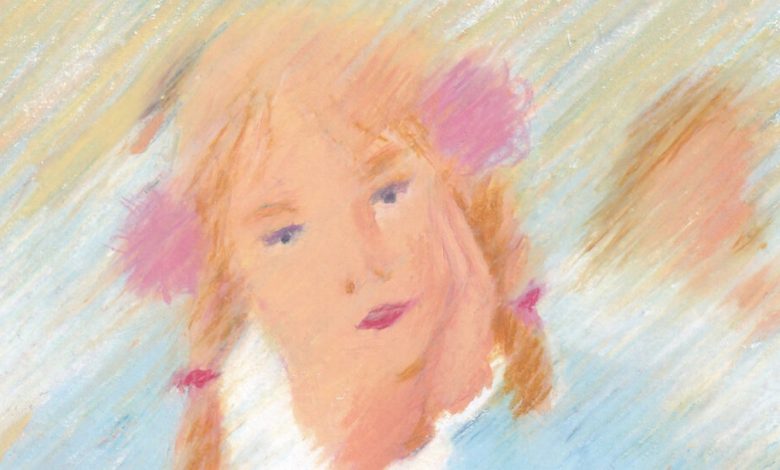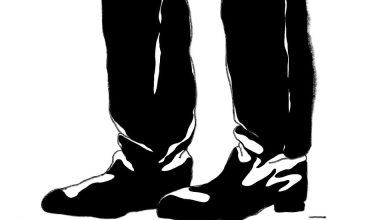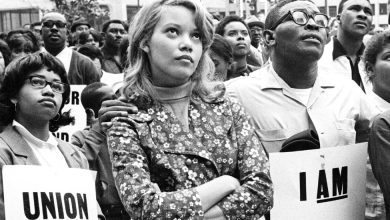Watching Britney Spears, as a Girl and a Woman

There is a moment in Britney Spears’s new memoir when she is summoned to an MTV studio and made to review footage of strangers complaining that she was “too sexy.” Spears, then 18, had just performed at the 2000 Video Music Awards, where she had torn off a sparkly black tuxedo to reveal spangled nude pants and a spangled nude bra, and various pedestrians roving Times Square had decided that she had crossed a line.
MTV had produced the awards show and profited from Spears’s performance, but it wanted a piece of the backlash, too. Now we could watch Britney Spears watch us critique her. She was expected to mount a defense — “What did I think of the commenters telling me I was corrupting America’s youth?” — but she did not know what she had done wrong. “All I wanted to do was sing and dance,” she writes in “The Woman in Me.” “Why did everyone treat me, even when I was a teenager, like I wasdangerous?”
The title of Spears’s memoir is a lyric from her 2001 power ballad “I’m Not a Girl, Not Yet a Woman.” The song doubles as an articulation of Spears’s pop-star brand and the suspended adolescent state over which she once ruled. But now, more than 20 years later, it also feels like a premonition. First Spears was robbed of her childhood, and then she was denied her adulthood. I grew up alongside Britney Spears, and my arms still flail instantly into a dorky approximation of her choreography whenever I hear her music. All of the culture’s scrambled messages live in my body somewhere, too.
When Spears’s debut single, “ … Baby One More Time,” exploded like a glitter bomb on my middle school campus in 1998, something about her did seem dangerous. I was 13 and skulking awkwardly through the 8th grade. She was 16 and gutsily scaling the pop charts, only pretending to go to school in the song’s music video. When she danced down the hallway in her schoolgirl outfit, she assumed command of our halls, too.
Spears arrived as the queen of girlhood, but she was not just for girls. The boys — who were themselves expected to project a compulsory heterosexuality — quickly reached a consensus that her music kind of sucked but that she was very hot. I could sense them dismantling her, distributing her parts. The girls could have her voice, but the boys would take her body.
I was not a huge Britney Spears fan, but I didn’t have to be. Her rise felt inevitable, her power hegemonic. Her music was designed for everyone to like it, and I did. I was fascinated by the rusty edge of her voice. In friends’ bedrooms, we reenacted her videos. We pretended we were sad in a gymnasium or writhing on Mars. As we impersonated her pigtail braids and her creaky rasp, we also projected ourselves into her zone of male approval, familiarizing ourselves with its unsettling power. Britney Spears was the soundtrack to the death of my childhood. It was the time when I started to see myself from outside myself — to view my body through the monitor of judgment.
I did not register this at the time, but it was not just teenage boys who laid claim to the body of Britney Spears. When she was 17, Rolling Stone dispatched a grown man to report from her bedroom, and he returned with notes on her “honeyed thigh” and “ample chest.” On the cover, another man posed her on a bed wearing only a bra and boy shorts, with a Teletubby tucked under her arm. In newspapers and magazines, adult writers called her “jailbait” — essentially an accusation that a child has tempted an adult to sexually assault her. A People magazine cover in 2000 asked if Spears, then 18, was “Too Sexy Too Soon.” In the memoir, Spears describes her disturbed reaction as her audiences filled with “more and more older men” who leered at her “like I was some kind of Lolita fantasy.”
Looking back now, of course Britney Spears does not seem dangerous. Like me, she was a child. It was the intensity of the attention trained on her that was perverse. Through her, I learned that the bodies of women and girls had a speculative value. Men determined their worth. They invested early, but they were always ready to withdraw their attention and place it in someone new. I looked nothing like Britney Spears, moved nothing like her, but I still felt like the culture was telling me: You are as valuable now as you will ever be.
The early coverage of Spears took pains to emphasize her grip over her own career, and in many ways, it was true. Much of the appeal of her image was that it was shaped by the tastes of an actual teenage girl. In the book, she writes that the concept and styling of the “ … Baby One More Time” video were hers. And yet there was also something suspicious about how tirelessly record executives and managers emphasized her power. It is uncontroversial to think of boy bands like ’N Sync and the Backstreet Boys as engineered. With Spears, it seemed important to insist that she was responsible.
Every time her handlers spoke of her authority, they reminded us that it was conditional on their approval. They got to decide that Britney Spears was in control. And they got to decide when she was out of it.
In 2007, Spears again performed at the Video Music Awards, this time somewhat against her will. She was newly postpartum and fighting her ex-husband, Kevin Federline, for custody of her infant sons. Her team, she writes, had pressured her to promote her new album and “show the world that I was fine.” She appeared in a glittery bikini and danced uneasily to her song “Gimme More.”
She was, she writes, “not fine.” She was exhausted, dizzy and unrehearsed. “It was less than a year since I’d had my second baby in two years but everyone was acting like my not having six-pack abs was offensive,” she writes. “I could see myself on video throughout the auditorium while I performed; it was like looking at myself in a fun-house mirror.”
This time her performance was pitched not as a danger to America’s youth, but to her own children. After the show, Ryan Seacrest grilled her about whether she was fit to be a mother. A teen columnist for a Florida newspaper gave her “The Worst Mother Award.”
In 2007, I was a recent college graduate. I spent many nights extending my adolescence by getting drunk and singing “Overprotected” at a karaoke bar. I regularly embarrassed myself by dancing poorly to Britney Spears. And yet, when I watched her VMAs performance, I thought it was disastrous and amusing.
Now, as I read about the event through Spears’s book, I got hot with shame, and then I got mad. I am now, like Spears, the mother to two boys, and they are about the age that her children were when she was led onto that stage. I could once again imagine living in a body like hers — her postpartum fun-house body, the one that was proffered as sad proof that she had lost her waistline, her control and her worth.
The postpartum period is much like adolescence, with its startling physical changes and its extreme public scrutiny. Of course Britney Spears was exhausted — she had two babies. Of course she was unrehearsed — she had two babies. When I watched the performance again recently, it played like found footage in a horror movie. I saw a new mother being forced to do a sexy dance for America, and for the quality of her performance to inform whether she got to keep her children.
In “The Woman in Me,” Spears compares herself to Benjamin Button, the literary and movie character who is born as an old man and ages in reverse. When she was a girl, she was treated as if she was dangerously mature. When she became a woman, she was infantilized. Spears had long felt like her body was public property, but when she was placed under a conservatorship administered by her father and a lawyer, not long after that performance at the VMAs, that feeling was made literal. She was converted, she says, into a “child robot.” She became all body, no voice.
The memoir is pitched as Spears’s reclaiming of her voice. But every celebrity memoir is an act of ventriloquism: The book was ghostwritten, and its audiobook was read by the actress Michelle Williams.
The most direct portal to Spears’s mind of late has been Instagram, where she posts wordless videos and pictures of herself in thongs or crop tops or in nothing at all, smiling and spinning and gyrating. In the book, she explains that after a life of being “prodded and posed for other people’s approval,” she no longer cares what they think. She reminds me of myself as a girl, dancing to a Britney Spears song in her bedroom. Her posts appear glitchy and unpolished. She looks like she’s playing around, investigating her new powers.




